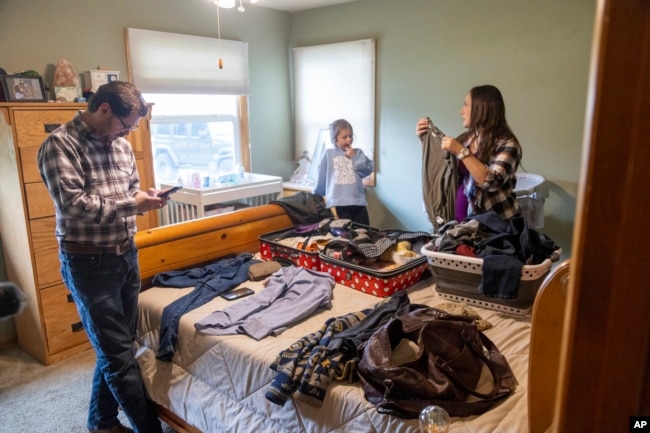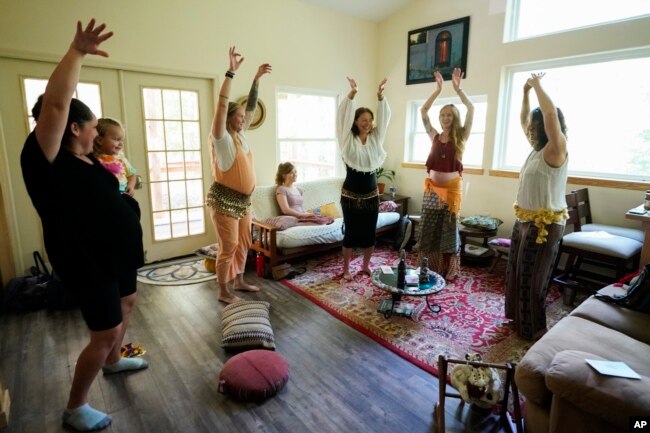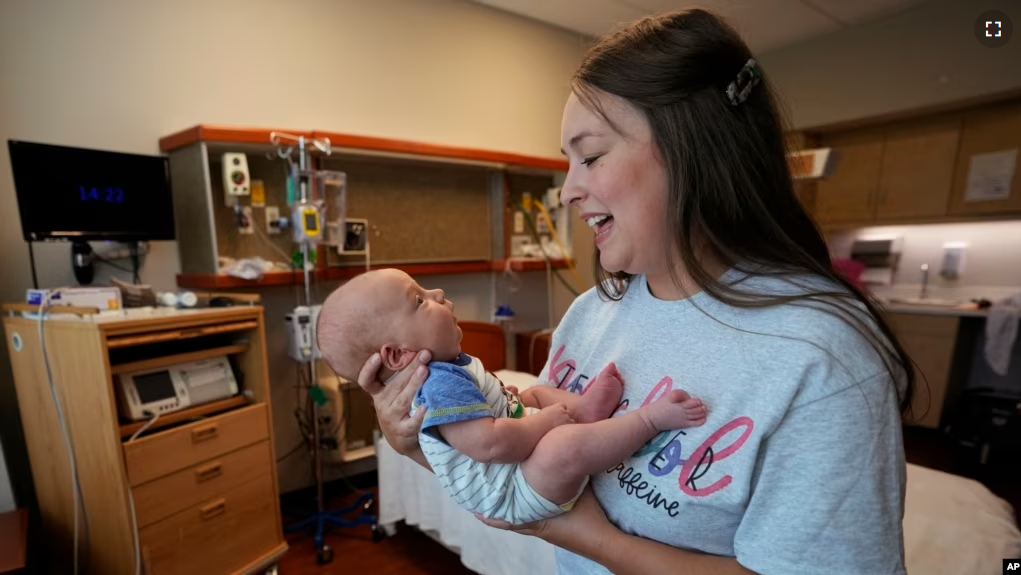Alisha Alderson is a 45-year-old woman from rural eastern Oregon. In August, she was pregnant and just a few weeks from having her baby.
But that month, the only hospital maternity center near to her closed. She decided to stay with her brother in the city of Boise, Idaho to be close to a hospital.
In the United States, many rural hospitals have been closing maternity centers. The centers are areas of the hospital used only for mothers to give birth to their babies.
Fewer than half of rural hospitals are now believed to have maternity units. That means pregnant women might have to travel long distances to have their babies under hospital supervision in specialized centers.
The Associated Press (AP) reports that birth centers are now increasing in the U.S. A midwife is a person who is trained to help women give birth but who is not a doctor. These centers however still need a hospital nearby in case of serious problems.

More than 2 million women of childbearing age live in places that some observers call “maternity care deserts.” These are mainly rural areas that do not have hospitals with specialized maternity centers or obstetricians. An obstetrician is a doctor who specializes in the health of pregnant women.
Some doctors and researchers say that having fewer maternity units makes having babies less safe. A 2019 study of information from 2007 to 2015 said that rural residents have a nine percent greater chance of facing life-threatening problems or death from pregnancy and birth “compared with urban residents.”
Dr. Eric Scott Palmer specializes in helping babies born early and newborns with high-risk complications. He used to serve as a doctor at Henry County Medical Center in rural Tennessee before the hospital ended obstetric care in September 2023.
He said, “Moms have complications everywhere. Babies have complications everywhere.”
Reasons for closures
Peiyin Hung is with the University of South Carolina’s Rural and Minority Health Research Center. She said that there are several reasons why maternity units are closing.
Hung said there has been a decrease in the number of births in the United States. There are few workers in hospitals. And there are other reasons. For example, health care providers say government health insurance for the poor, called Medicaid, does not pay them enough for their services.
The chief of Henry County Medical Center in Paris, Tennessee, John Tucker, said that closing the obstetrics, or OB, unit of the hospital was necessary to save the hospital itself.
Tucker said that 70 percent of the births there were covered by Medicaid. That number is above the national average of 42 percent. Tennessee’s Medicaid program only pays the hospital $1,700 for each baby born.
Private insurance usually pays more. In the state of Oregon in 2021, the median payment to hospitals for a cesarean section, or C-section, was $16,000. That is five times more than what Medicaid would provide for the same operation.
Tucker also said there were problems with having the right number of workers. He said when there are fewer births, hospitals lose money because their costs are fixed. “Whether we’ve got one baby on the floor or three, we still staff at the same level because you…have to be prepared for whatever comes in.”
A solution for some
Corina Fitch is a midwife at The Farm Midwifery Center in Summertown, Tennessee. It is an independent center where pregnant women can receive maternity care. Fitch measures women’s stomachs, takes their blood, listens to fetal heartbeats, and gives nutritional information.
These kinds of centers could be an answer to the lack of maternity care choices in rural areas. Many states are now taking steps to support more independent birth centers. In Connecticut, Governor Ned Lamont signed a law that will license these centers letting them provide care for low-risk pregnancies.
A 2020 report from the National Academies of Sciences, Engineering, and Medicine said there is a lack of data about independent birth centers. It said researchers do not fully understand the relationship between birth settings and maternal death or complications. That is partly because there are a small number of births at independent centers.

The Farm Midwifery Center reported that fewer than two percent of women decided to get a C-section. Five percent of patients were transported to hospitals in the center’s first 40 years. Usually, women give birth at the center or at their homes.
Fitch said, “We always have a backup plan because we know birth is unpredictable and things can come up.”
Some doctors told the AP that rural hospitals still need to be part of any answer. They think that state governments need to do more.
This June in Oregon, Baker City hospital announced that it was going to close its maternity center. Oregon politicians got involved.
They suggested temporarily using obstetric nurses from the US Public Health Service Commissioned Corps. The Corps is a group of military health care workers within the U.S. Department of Health and Human Services. The group usually helps with natural disasters and disease outbreaks.
However, that did not happen. The public health service sent officials who advised establishing an independent birth center among other things.
Alisha Alderson — the woman who had to go to Idaho for pregnancy care — is married to Shane Alderson. He said that rural communities should not have limited health care because of their size or because of the number of people on Medicaid.
Alderson said, “That’s not equitable. People can’t survive like that.”
I’m Dan Novak.
And I’m Faith Pirlo.
Claire Rush and Laura Ungar reported this story for the Associated Press. Faith Pirlo adapted it for VOA Learning English.
____________________________________________________
Words in This Story
maternity — n. relating to the time when a woman gives birth to a baby
resident –n. a person who lives in a place, is not a visitor and legally calls the place their home
complication – n. a problem that makes a disease or condition more dangerous or harder to treat
insurance –n. the agreement called a policy in which the policy holder pays a company regularly so that the company will cover most of the cost of a large health, or other, expense
income – n. money that is earned from work, investments, business, etc.
median –n. the middle value in a group of numbers
cesarean section – n. a surgical operation for giving birth in which a cut is made in the mother’s body in order to deliver the baby (also called C-section)
staff –n. a group of people who work for an organization or business
license – v. to give someone official permission to do or have something
